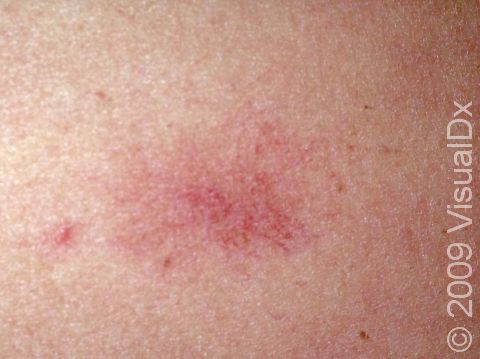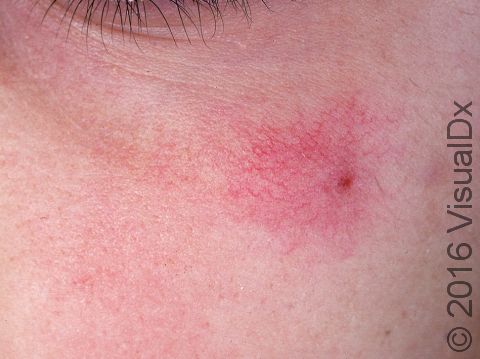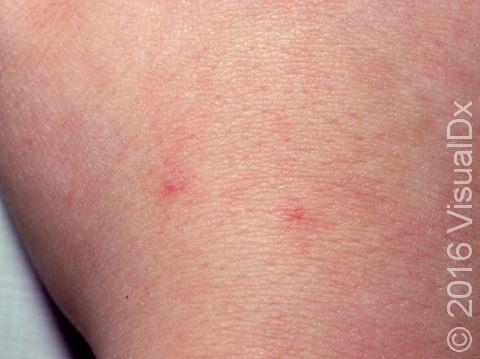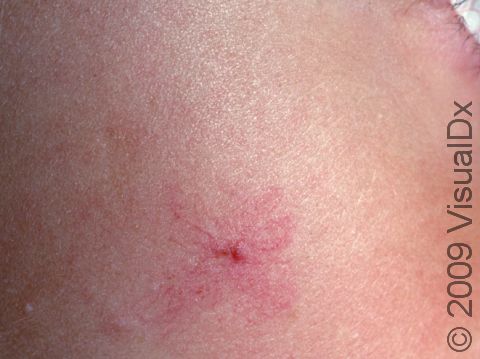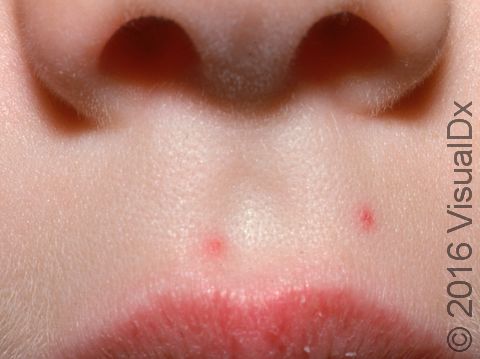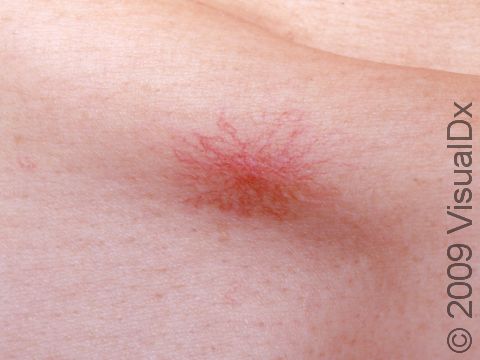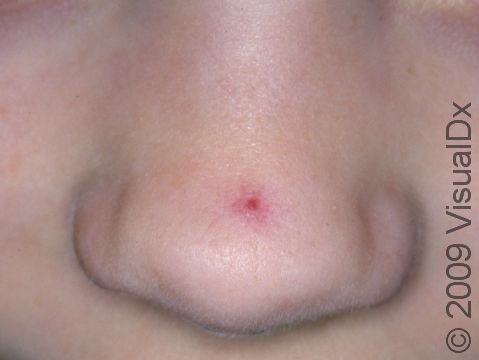Spider Angioma
A spider angioma is a common, mild (benign) skin condition that appears as a small red spot or bump on the surface of the skin.
A spider angioma is a grouping of small blood vessels at the skin surface. A central, “feeder” vessel is unusually dilated, and it separates into multiple smaller vessels radiating away from it. The pattern sometimes resembles the threads of a spider’s web. Pressing on the central portion of a spider angioma may cause the entire lesion to disappear, but the central part (which looks like a spider’s body) and the extensions (the spider’s legs) rapidly refill with blood once the pressure is released.
As a child grows older, the spider angioma usually fades and even disappears completely.
Who's At Risk?
Spider angiomas occur in both children and adults. Children of all races can develop spider angiomas, but they are more apparent in lighter-skinned individuals. Girls and boys seem to be equally affected.
It is estimated that up to 50% of children may develop a spider angioma at some point during childhood.
Signs & Symptoms
The most common locations for spider angiomas include:
- Face, especially below the eyes and over the cheekbones
- Neck
- Upper trunk
- Backs of the hands and fingers
- Forearms
- Ears
Spider angiomas may appear singly or as multiple lesions. Each spider angioma appears as a small (1–10 mm), bright red spot. Upon closer inspection, you will see a central red dot with tiny red lines radiating out from the center.
Rarely, they may bleed if injured (traumatized).
Self-Care Guidelines
Although treatment is not necessary, some people wish to remove spider angiomas for cosmetic reasons. In children, however, spider angiomas usually go away without treatment, though they may take several years to disappear completely.
Treatments
The diagnosis of a spider angioma is usually easy to make, but some lesions may not be obvious and may require a skin biopsy to confirm the diagnosis. The biopsy procedure involves:
- Numbing the skin with an injectable anesthetic.
- Sampling a small piece of skin by using a flexible razor blade, a scalpel, or a tiny cookie cutter (called a “punch biopsy”). If a punch biopsy is taken, a stitch (suture) or two may be placed and will need to be removed 6–14 days later.
- Having the skin sample examined under the microscope by a specially trained physician (dermatopathologist).
If the diagnosis of spider angioma has been confirmed, no treatment is necessary. However, if your child is self-conscious about the area or if it frequently bleeds, the doctor may offer one of the following procedures:
- Burning with an electric needle (electrocautery or electrodesiccation)
- Using a laser to destroy the central blood vessel
Visit Urgency
If the area frequently bleeds or if it begins to change in size or color, you should see your child’s doctor or a dermatologist for evaluation. The child should also be evaluated if multiple angiomas suddenly develop at the same time.
References
Bolognia, Jean L., ed. Dermatology, pp.721, 1656, 2157. New York: Mosby, 2003.
Freedberg, Irwin M., ed. Fitzpatrick’s Dermatology in General Medicine. 6th ed. pp.1003, 1013-1014, 2502. New York: McGraw-Hill, 2003.
Last modified on August 16th, 2022 at 2:44 pm

Not sure what to look for?
Try our new Rash and Skin Condition Finder
